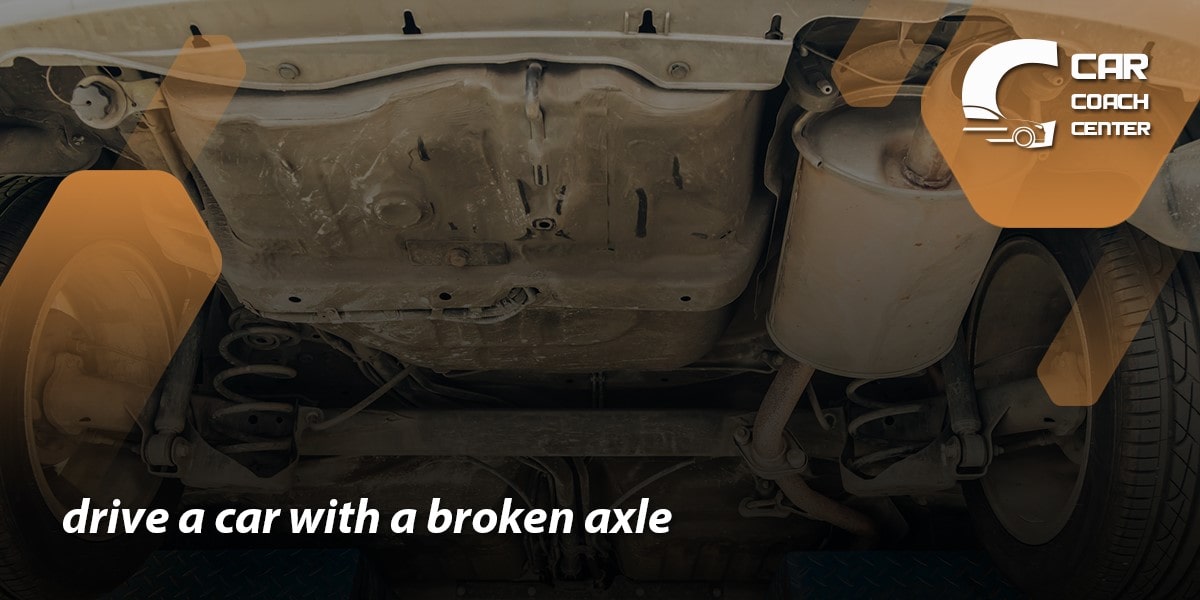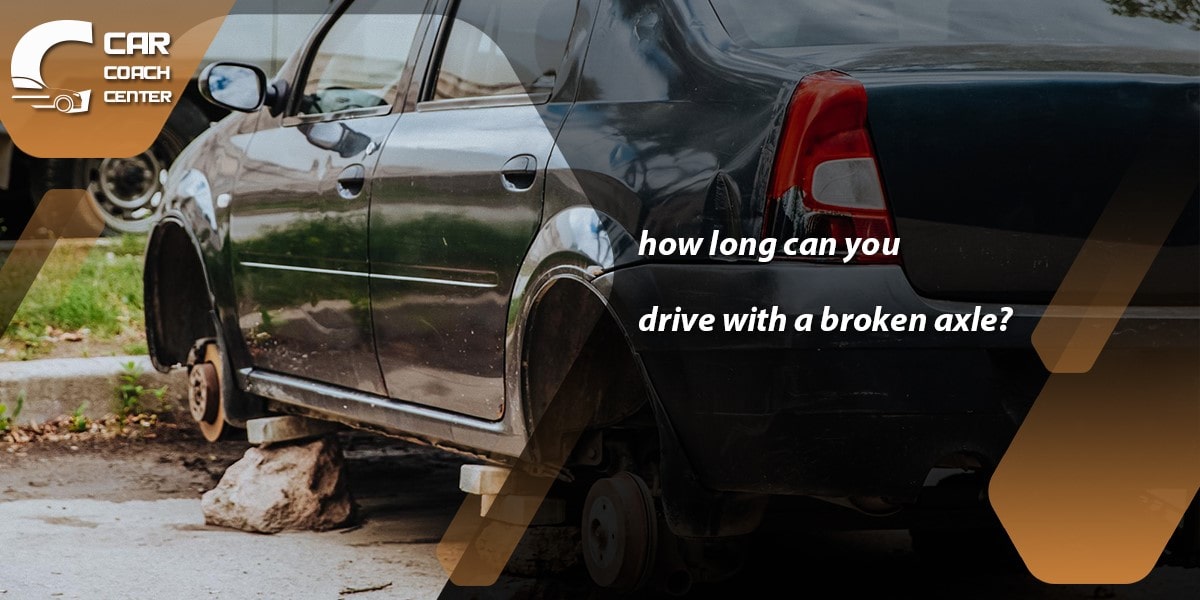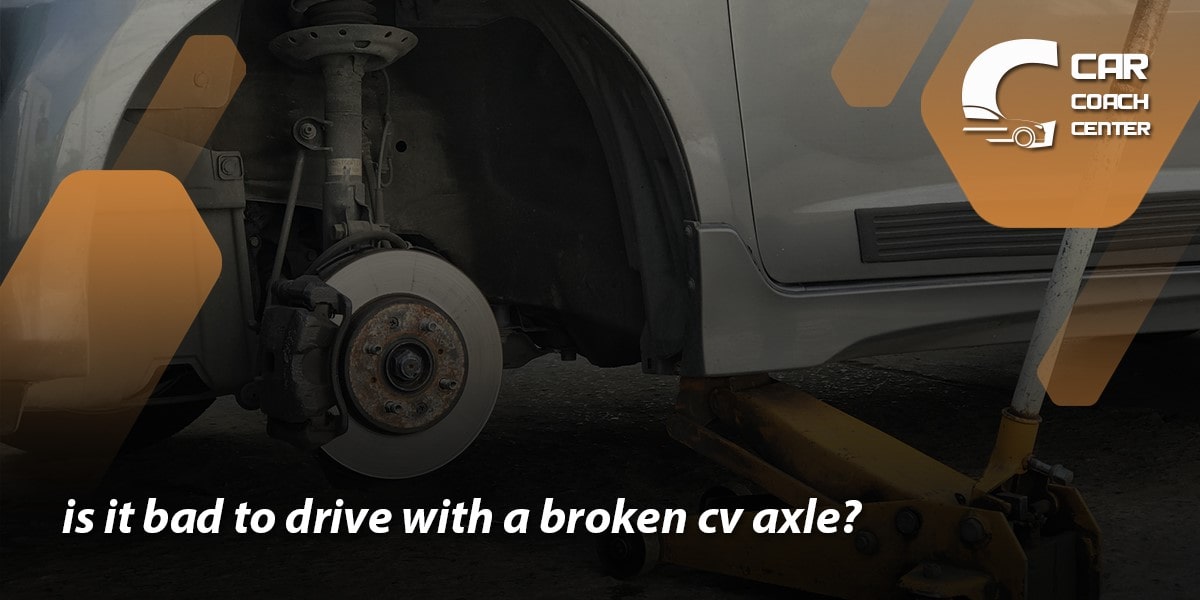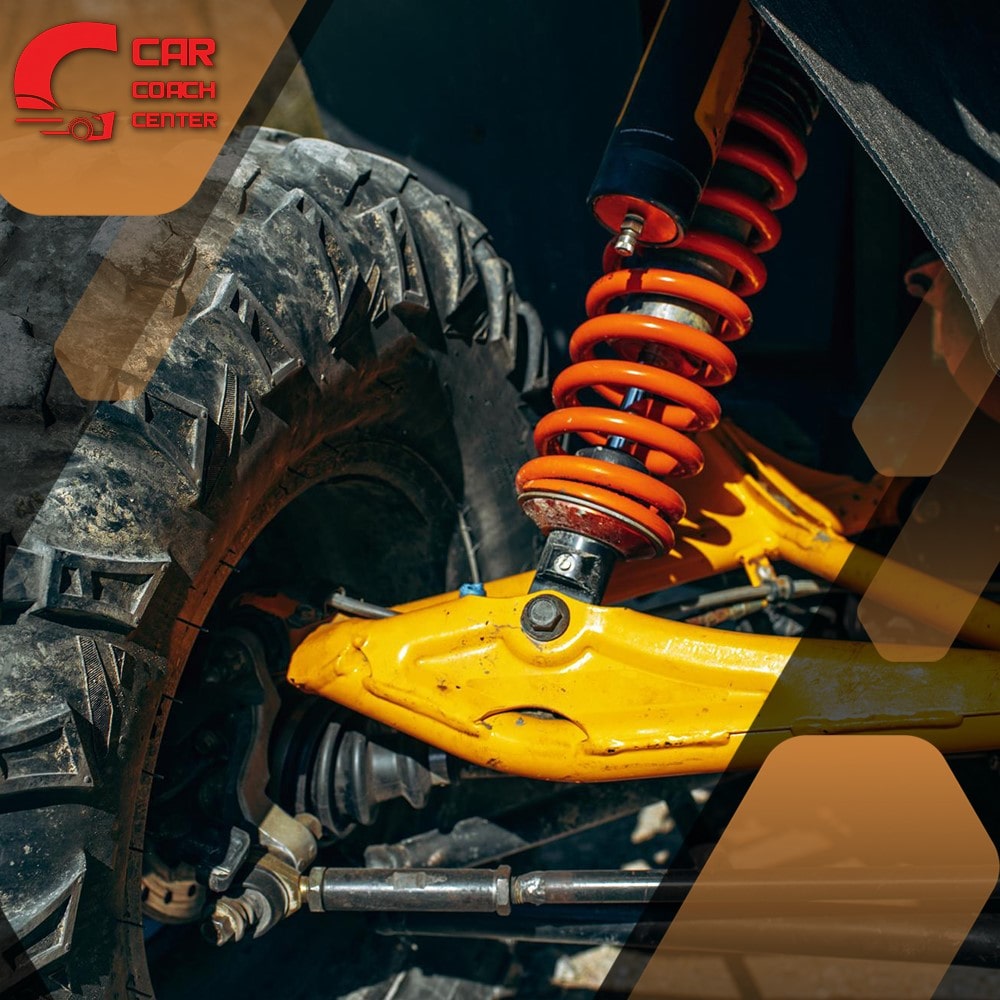Can You Drive With A Bad Broken Axle
Your vehicle’s axles play a vital role in your car’s smooth and safe operation. Responsible for transmitting power from the engine to the wheels, axles are subjected to immense stress and strain. Unfortunately, axles can break due to various factors, such as accidents, overloading, or regular wear and tear.
The question arises: Can you continue driving with a badly broken axle? This article will delve into this pressing issue, exploring the signs and symptoms of a broken axle, the potential dangers of driving with one, the underlying causes of axle failure, and the available repair options.

Additionally, we will discuss the importance of timely axle maintenance and preventive measures to extend the lifespan of your vehicle. You can make informed decisions regarding your safety, vehicle maintenance, and potential repairs by gaining a deeper understanding of these crucial aspects. So, let’s dive into the world of broken axles and discover the truth behind the wheel.
Signs and Symptoms of a Broken Axle: Uncovering the Telltale Clues
Your vehicle’s axle plays a crucial role in your car’s smooth and safe operation. A broken axle can significantly impact your driving experience and pose potential dangers on the road. By recognizing the signs and symptoms of a broken axle, you can promptly address the issue and ensure your safety. Here are some telltale clues to watch out for:
Strange Noises: One of the most noticeable signs of a broken axle is unusual noises from the affected area. Pay attention to any clicking, clunking, or grinding sounds when you accelerate, decelerate, or turn. These noises may indicate that the axle components are damaged or misaligned.
Vibrations and Shakes
A broken axle can cause vibrations and shakes, especially during acceleration or when reaching higher speeds. If you feel excessive shaking or vibrations in the steering wheel, floor, or seats, it could clearly indicate an axle problem. These vibrations are often more pronounced when turning.
Unusual Handling
A broken axle can greatly affect your vehicle’s handling and stability. If you notice a sudden change in how your car responds to steering inputs, such as increased difficulty in turning or a feeling of looseness in the steering, it could be a sign of an axle issue. You may also experience a pulling sensation, where your car veers to one side without input from the steering wheel.
Wheel Misalignment
Inspect the position of your wheels visually. If one or more wheels appear misaligned, it could indicate a broken axle. Misalignment may cause the affected wheel(s) to tilt inward or outward, leading to uneven tire wear.
Fluid Leaks
A broken axle can sometimes cause fluid leaks, particularly if the damage involves the axle shaft or its surrounding seals. Look for any signs of greasy or oily residue near the wheels or differential. These leaks should be addressed, as they can lead to further damage if addressed.
The Dangers of Driving with a Broken Axle: A Risky Road to Avoid
Driving with a broken axle is ill-advised and poses significant dangers to you, your passengers, and other road users. The consequences of neglecting a broken axle can be severe, leading to potentially hazardous situations. Understanding the risks involved is crucial for making informed decisions about your vehicle’s safety. Here are some of the dangers associated with driving on a broken axle:
Loss of Control
A broken axle can compromise your ability to maintain control of your vehicle. It can lead to erratic steering response, reduced handling capabilities, and an overall lack of stability. This loss of control increases the risk of accidents, especially during emergency maneuvers or unexpected road conditions.
Tire Blowouts and Failures
A damaged axle can cause uneven weight distribution and excessive stress on the affected wheel(s). This can result in tire blowouts or sudden failures, losing traction and control. A blowout at high speeds can be particularly dangerous, causing the vehicle to veer out of control and potentially result in a collision.
Suspension Damage
A broken axle can put additional strain on your vehicle’s suspension system. This increased stress can lead to premature wear and damage to other components, such as control arms, bushings, and struts. As these parts deteriorate, your vehicle’s handling and stability are further compromised.
Increased Risk of Accidents
Driving with a broken axle significantly increases the risk of an accident. The compromised control, handling, and stability of your vehicle can make it more challenging to respond effectively to sudden changes in traffic or road conditions. This endangers your safety and the safety of others sharing the road with you.
Expensive Repairs
Neglecting a broken axle can result in more extensive damage to your vehicle’s drivetrain and suspension systems. What may have initially been a simple axle repair can escalate into costly repairs or even the need for a complete axle replacement. Promptly addressing the issue can help mitigate potential damage and reduce repair expenses.

What Causes Axles to Break? Unveiling the Culprits
Axles are designed to withstand tremendous stress and strain, but various factors can lead to their failure. Understanding the underlying causes of axle breakage can help you identify potential risks and take preventive measures. Here are some common culprits behind axle failure:
Overloading and Weight Distribution
One of the primary causes of axle breakage is excessive loading beyond the manufacturer’s recommended limits. When a vehicle is overloaded, the weight exerted on the axles surpasses their capacity, leading to increased stress and eventual failure. Uneven weight distribution, where a disproportionate amount of weight is placed on one side of the vehicle, can also strain the axles, making them more susceptible to breaking.
Impact and Collision Damage
Accidents and collisions can significantly damage axles. The force generated during a collision can cause bending, twisting, or even complete fractures in the axle components. Hard impacts, such as hitting curbs or potholes at high speeds, can also lead to axle damage. It’s crucial to exercise caution and avoid rough driving conditions that can put excessive strain on your axles.
Wear and Tear
Like any other mechanical component, Axles are subject to wear and tear over time. Continuous use can gradually weaken the axles, especially in demanding conditions or rough terrains. Corrosion, rust, and material fatigue can contribute to their degradation. Regular maintenance, including lubrication and inspections, is essential to detect and address early signs of wear before they lead to a complete axle failure.
Lack of Maintenance
Neglecting routine maintenance tasks can increase the likelihood of axle failure. Failing to keep the axle properly lubricated can result in excessive friction and heat buildup, leading to accelerated wear and potential damage. Additionally, disregarding other maintenance aspects, such as inspecting and replacing worn-out components, can compromise the overall health of the axle and increase the risk of failure.
Manufacturing Defects
Although rare, manufacturing defects can contribute to axle breakage. Flaws in the material composition, design, or assembly process can weaken the axles, making them more prone to failure even under normal driving conditions. In such cases, axle failure may occur earlier than expected, highlighting the importance of regular inspections and potential recalls issued by manufacturers.

Assessing the Repair Options: Can a Broken Axle Be Fixed?
Discovering a broken axle in your vehicle can be disheartening, but the good news is that repair options are available in many cases. However, the feasibility of repairing a broken axle depends on several factors, including the extent of the damage, the type of axle, and the specific circumstances. Here’s a closer look at the repair options for a broken axle:
Repair vs. Replacement
The first consideration is whether the broken axle can be repaired or if a complete replacement is necessary. Minor damage, such as a cracked axle shaft or a damaged CV joint, can often be repaired by welding or replacing the affected component. However, a replacement might be the safest and most cost-effective solution if the axle is severely fractured or twisted.
Professional Intervention
Repairing a broken axle is a complex task that requires specialized knowledge and equipment. It is highly recommended to seek the help of a trained mechanic or an axle specialist for a thorough assessment and professional repair. They have the expertise to accurately diagnose the issue, determine the repairability, and perform the necessary repairs or replacements to restore the axle’s functionality.
DIY Solutions
While some temporary fixes may be available for a broken axle, they are generally not recommended for long-term use or heavy-duty driving. DIY methods such as axle splints or bandages can provide a temporary solution to get you safely to a repair facility, but they should not be considered permanent fixes. It is crucial to remember that driving with a temporary repair should be done cautiously and at lower speeds.
The Importance of Timely Axle Maintenance: Extending the Lifespan of Your Vehicle
Axle maintenance is a crucial aspect of vehicle care that often goes overlooked. However, understanding the importance of timely axle maintenance can help you extend the lifespan of your vehicle, enhance its performance, and ensure your safety on the road. Here’s why prioritizing axle maintenance is essential:
Early Detection of Issues
Regular axle maintenance allows for the early detection of potential problems. By inspecting and lubricating the axles as part of routine maintenance, you can identify signs of wear, damage, or misalignment before they escalate into more severe issues. Catching problems early can save you from costly repairs and prevent unexpected breakdowns.
Enhanced Performance
Properly maintained axles contribute to the overall performance of your vehicle. Well-lubricated and aligned axles provide smooth power transmission, efficient handling, and improved traction. Neglecting maintenance can result in decreased performance, compromised handling, and increased fuel consumption. Regular maintenance ensures your vehicle operates optimally and delivers a more enjoyable driving experience.
Prevention of Additional Damage
Axle issues can have a domino effect on other vehicle components. A neglected or damaged axle can put extra stress on the suspension system, wheels, and tires, leading to premature wear and potential failures. Maintaining your axles reduces the risk of secondary damage and the associated expenses of replacing multiple components.
Safety on the Road
You, your passengers, and other road users should always be a top priority. Well-maintained axles play a vital role in ensuring safe driving conditions. A properly functioning axle contributes to stable handling, reliable steering response, and better vehicle control. Regular maintenance minimizes the risk of accidents or sudden failures caused by axle-related issues.
Extended Lifespan
Taking care of your axles through timely maintenance can significantly extend their lifespan. Regular lubrication helps reduce friction and wear, preserving the integrity of the axle components. Maintaining the axles can maximize their longevity and avoid premature replacements. This translates into cost savings and prolonged use of your vehicle.
To prioritize axle maintenance, consider the following steps:
Follow the manufacturer’s recommended maintenance schedule for axle inspections and lubrication.
Regularly check for signs of wear, leaks, or damage to the axle components.
Ensure proper wheel alignment and tire rotation to reduce axle strain.
Consult a professional mechanic for comprehensive axle inspections and maintenance tasks.
Use high-quality lubricants and follow the recommended intervals for reapplication.

Avoiding a Broken Axle: Tips for Preventive Care
Prevention is always better than dealing with a broken axle and its potential consequences. By implementing preventive care measures, you can minimize the risk of axle failure and maintain the overall health of your vehicle. Here are some essential tips to help you avoid a broken axle:
Proper Loading and Weight Distribution
Avoid overloading your vehicle beyond its recommended weight capacity. Excessive weight can strain the axles, leading to premature wear and potential failure. Distribute the load evenly across the vehicle to ensure balanced weight distribution and reduce stress on individual axles.
Defensive Driving Techniques
Practice defensive driving to minimize the risk of axle damage. Avoid rough road conditions, potholes, and curbs whenever possible. Drive at moderate speeds over speed bumps and road irregularities to prevent sudden impacts that can damage the axles. Being alert and proactive on the road can help you avoid accidents and potential axle-related issues.
Regular Maintenance Checks
Follow the manufacturer’s recommended maintenance schedule for your vehicle, including axle inspections. Regularly inspect the axles for signs of damage, such as cracks, leaks, or misalignment. Please pay attention to unusual noises, vibrations, or handling issues, which may indicate potential axle problems. Promptly address any concerns by consulting a professional mechanic.
Lubrication and Maintenance
Adequate lubrication is crucial for proper axle function and longevity. Follow the manufacturer’s guidelines for lubricating the axles, and ensure you use the recommended lubricants. Regularly check and maintain proper fluid levels in the differential, as insufficient lubrication can lead to excessive friction and damage.
Avoiding Excessive Axle Stress
Be mindful of your driving habits to prevent unnecessary stress. Avoid sudden acceleration, abrupt stops, and aggressive turns, as these actions can strain the axles. Smooth, controlled driving reduces the risk of axle damage and extends their lifespan.
Timely Repairs and Replacements
If you notice any signs of axle damage or wear, address them promptly. Ignoring minor issues can lead to more significant problems down the line. Consult a professional mechanic to assess the situation and perform necessary repairs or replacements as recommended.
conclusion
In conclusion, understanding the signs, dangers, causes, repair options, and preventive care measures related to a broken axle is vital for every vehicle owner. Driving with a broken axle poses significant risks, including loss of control, tire blowouts, suspension damage, increased accidents, and expensive repairs.
Timely maintenance and prompt repairs play a crucial role in extending the lifespan of your vehicle and ensuring your safety on the road. By prioritizing axle maintenance, practicing defensive driving techniques, and following proper loading guidelines, you can minimize the risk of a broken axle and preserve the integrity of your vehicle’s drivetrain.
Regular inspections, lubrication, and addressing any issues promptly are key to avoiding potential hazards. To learn more about vehicle maintenance and care, visit carcouchcenter.com, where you’ll find valuable resources and expert advice to keep your vehicle in optimal condition. Remember, taking preventive measures today can save you from costly repairs and provide peace of mind for future journeys.
Can I drive with a badly broken axle?
It is highly discouraged to drive with a badly broken axle as it poses serious safety risks and can further damage your vehicle.
How can I tell if my axle is broken?
Signs of a broken axle include strange noises, vibrations, unusual handling, wheel misalignment, and fluid leaks near the wheels or differential.
Can a broken axle be repaired?
Depending on the extent of the damage, some broken axles can be repaired, but it is often safer and more cost-effective to opt for a replacement.


